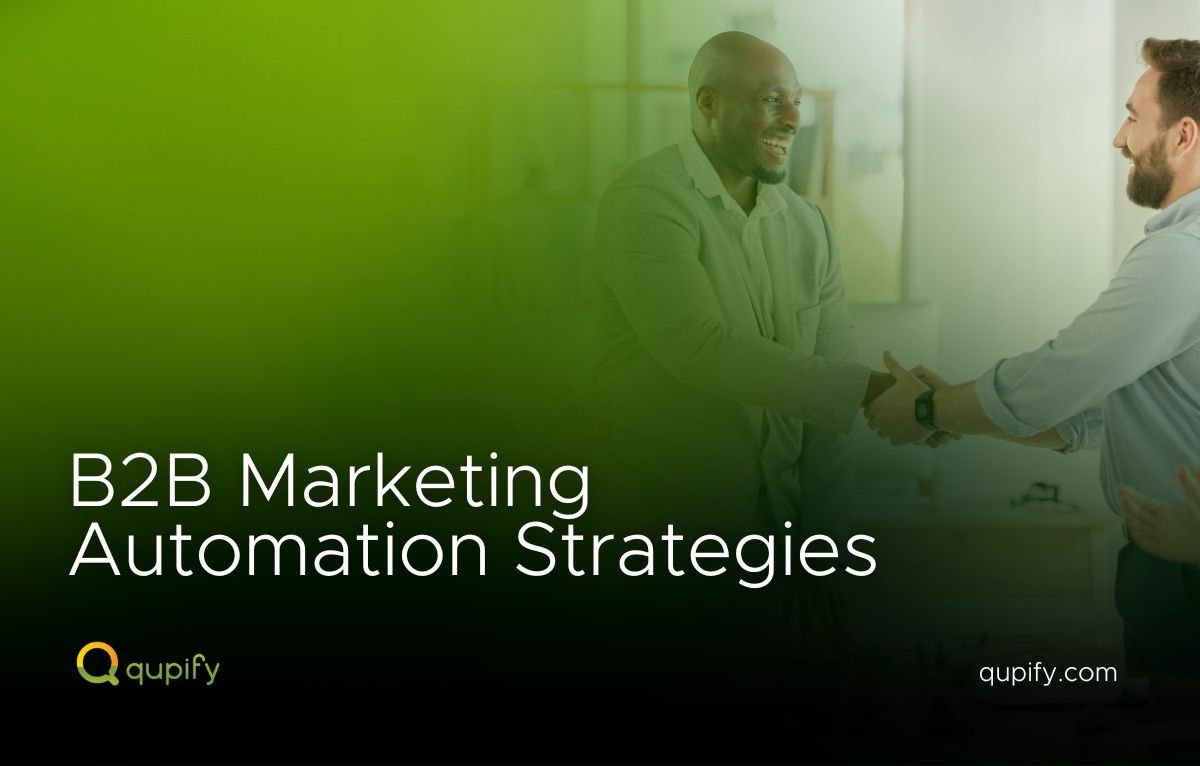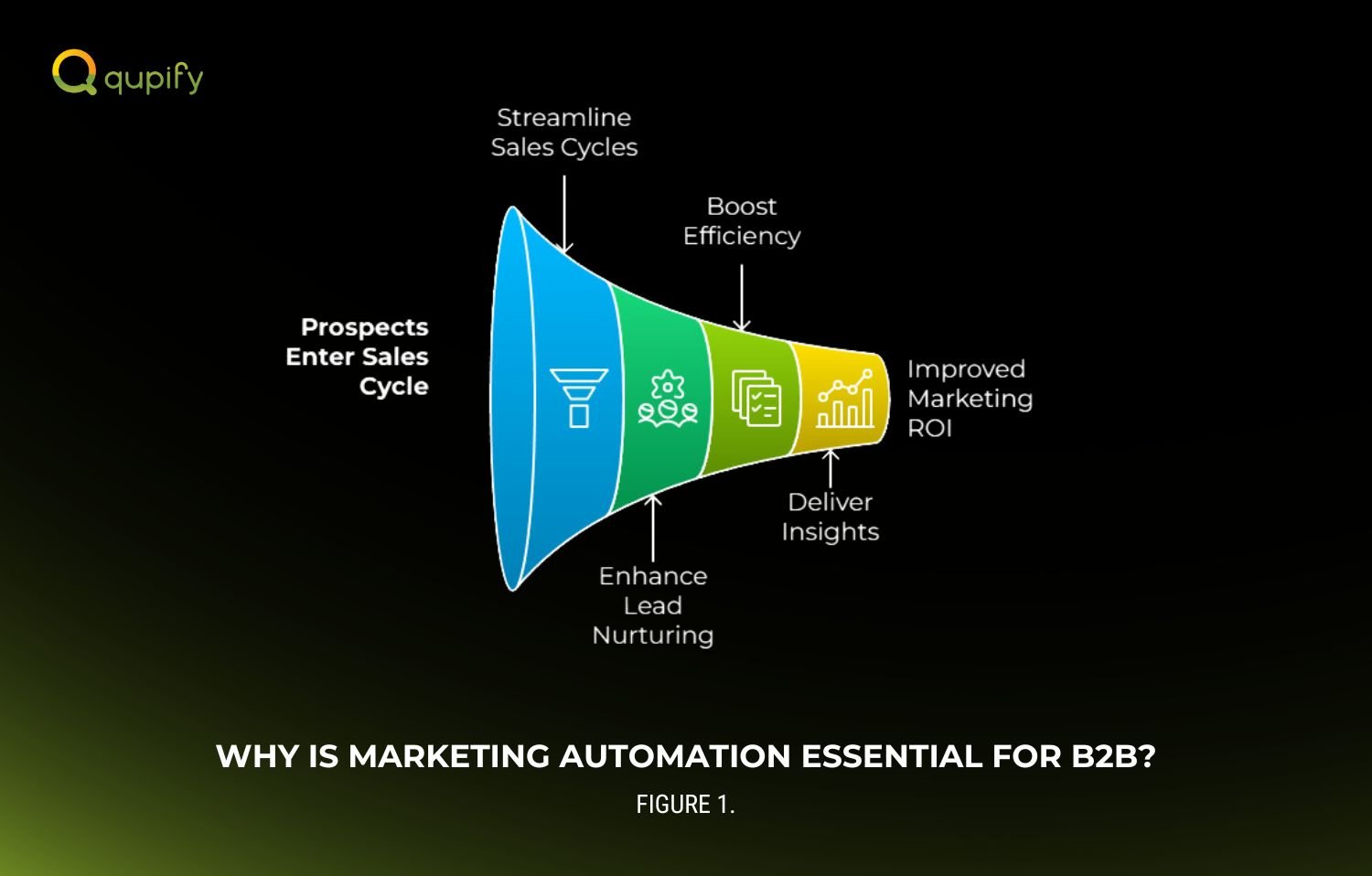10 B2B Marketing Automation Strategies for 2025
Marketing automation has become a vital tool for businesses aiming to streamline their processes, nurture leads, and drive sales.
With 2025 approaching, the role of automation in B2B marketing is expanding further, allowing companies to provide hyper-personalized experiences, improve efficiency, and integrate data-driven insights. In fact, 67% of marketers already use marketing automation, while 30% plan to implement it shortly.
This article explores what B2B marketing automation is, how it differs from B2C, why it’s essential for businesses and the best strategies to adopt for 2025 to stay competitive.

What is B2B Marketing Automation?
B2B marketing automation refers to the use of tools and technology to automate repetitive marketing tasks for businesses that sell to other businesses.
This includes automating activities such as email campaigns, lead nurturing, and customer relationship management (CRM).
The main goal of B2B marketing automation is to improve efficiency, save time, and create personalized experiences for prospects. It is particularly useful in managing the longer sales cycles and complex decision-making processes typical in the B2B landscape.
For example, a B2B marketing automation tool can help a business send targeted follow-up emails to potential clients based on their behavior, such as downloading a whitepaper or attending a webinar.
What’s the Difference Between Business-to-Business (B2B) and Business-to-Customer (B2C) Marketing?
Aspect | B2B Marketing | B2C Marketing |
Audience | Targets businesses and decision-makers. | Focuses on individual consumers. |
Buying Process | Longer sales cycle with multiple stakeholders. | Shorter, often impulse-driven purchasing decisions. |
Content Focus | Data-driven, educational content like case studies. | Emotion-driven, engaging content like ads or social posts. |
Decision Drivers | Logic, ROI, and long-term value. | Emotions, personal preferences, and immediate benefits. |
B2B and B2C marketing differ significantly in their goals, audience, and approach. B2B marketing focuses on building relationships with businesses and decision-makers, often requiring detailed educational content to guide a long and complex sales cycle.
In contrast, B2C marketing caters to individual consumers, emphasizing emotional connections and quick decisions with engaging and visually appealing content.
Understanding these differences helps businesses tailor their strategies to meet the specific needs and expectations of their target audience.
Why is Marketing Automation Essential for B2B?
Marketing automation has transformed how B2B companies engage with their prospects and customers. Here’s why it’s a game-changer:

Streamlines Complex Sales Cycles
B2B transactions often involve long decision-making processes with multiple touchpoints. Automation ensures prospects receive the right content at each stage of their journey, keeping them engaged and informed.
Enhances Lead Nurturing
Automation tools can segment leads based on behavior and send personalized content, guiding them through the sales funnel efficiently. For example, a prospect who downloads a report might receive follow-up emails with related resources.
Boosts Efficiency
Automating repetitive tasks like follow-up emails, data entry, or reporting saves time for marketing teams. This allows them to focus on creating impactful strategies.
Delivers Data-Driven Insights
Automation platforms provide analytics and reports that help businesses understand what’s working and what isn’t. These insights make campaigns more effective and improve ROI.
What Are the Best B2B Marketing Automation Strategies for 2025?
To stay competitive in 2025, businesses must adopt innovative marketing automation strategies that align with evolving market trends and customer expectations.
These strategies focus on enhancing efficiency, improving personalization, and driving better results through data-driven insights and advanced technology.
By leveraging automation tools effectively, businesses can streamline complex sales cycles, nurture leads more effectively, and provide seamless customer experiences.
Below are the top strategies that can help B2B marketers stay ahead of the curve:
Hyper-Personalization
Use data and AI to create highly tailored messages and campaigns. By customizing emails, landing pages, and workflows for individual prospects, businesses can increase engagement and build stronger relationships.
Personalized experiences show customers that their needs are understood, leading to higher conversion rates and loyalty.
Account-Based Marketing (ABM)
Combine automation with ABM to focus on high-value accounts. ABM allows businesses to craft unique campaigns that address the specific challenges and goals of target organizations.
Automation ensures these campaigns are delivered efficiently and at scale, making it easier to nurture relationships with key accounts.
Behavior-Triggered Campaigns
Automate responses based on specific user actions, such as visiting a pricing page or downloading a resource. Behavior-triggered workflows ensure timely and relevant communication, keeping prospects engaged.
These campaigns improve the likelihood of conversions by delivering the right message at the right moment.
AI-Powered Chatbots
Deploy AI chatbots to handle initial inquiries, qualify leads, and guide users to the next steps in their journey. Chatbots provide instant support 24/7, ensuring that potential customers receive prompt assistance.
They also help free up human resources by managing routine tasks and questions effectively.
Multi-Channel Integration
Automate campaigns across multiple channels, including email, social media, and paid ads, to create a consistent and seamless customer experience.
By connecting with prospects on various platforms, businesses can reinforce their messaging and improve visibility, ensuring no opportunity is missed.
Advanced Lead Scoring
Use advanced lead scoring models powered by machine learning to rank prospects based on engagement and likelihood to convert.
Automation tools can dynamically adjust lead scores as new data becomes available, helping sales teams prioritize the best opportunities.
Predictive Analytics
Leverage predictive analytics to identify trends, anticipate customer needs, and optimize campaigns. By understanding future behaviors and preferences, businesses can stay proactive in meeting their audience’s expectations, improving both engagement and results.
Content Automation
Automate the delivery of content tailored to each stage of the buyer’s journey. For example, share educational materials during the awareness stage and detailed product comparisons during the decision stage.
This strategy ensures that prospects receive relevant information, guiding them smoothly through the funnel.
Real-Time Dashboards
Use real-time dashboards to track key performance metrics like conversion rates and engagement levels. These dashboards allow marketers to adjust strategies on the fly, ensuring campaigns remain effective and aligned with business goals.
Sales and Marketing Alignment
Integrate marketing automation tools with CRM systems to ensure seamless collaboration between sales and marketing teams.
This alignment improves lead handoffs and creates a cohesive experience for prospects, ultimately increasing the chances of closing deals.
Stay ahead of the curve by understanding emerging trends in marketing automation and how they can impact your B2B strategies in 2025.
Conclusion
Test automation is a powerful way to improve software quality, reduce errors, and speed up development cycles. A clear strategy ensures your automation efforts are aligned with your goals and deliver real value. By defining objectives, choosing the right tools, and regularly optimizing your workflows, you can create a reliable and efficient automation process.
Ready to enhance your testing process? Check out this guide to top test automation tools.



